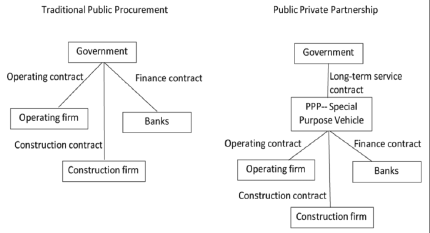Public Private Partnership: an alternative financing scheme
NEWS FROM EUROPE
18.06.2018
Written by Eurac Research
Public Private Partnership (PPP) is an alternative financing scheme, which will be tested in the renovation process of public buildings within the eCentral project in Croatia, financed by Interreg CENTRAL EUROPE programme.
The PPP is an agreement between government and one or more private partners (which may include the operators and the financers). The PPP is usually defined as an agreement or contract between, where responsibilities and requirements are written down and the risks allocated. The private partners deliver the service in such a manner that the service delivery objectives of the government are aligned with the profit objectives of the private partners. The effectiveness of the alignment depends on the sufficient transfer of risk to the private partners (source: OECD Organization for Economic Co-Operation and Development). The exact definition of a PPP contract depends on the extent of involvement of different parties and the risk taken by the private partner.
The basic structure of a PPP can be seen in the next figure. The government commissions a private partner, which is then responsible for further actions. At traditional public procurement, the public party must fully take care of the implementation of the project.

Scheme of PPP (Research Gate, 2018)
The main forms of PPP can be divided into four different types:
- 1. Management and operating agreements
- Public party contracts a private company for implementing certain services or actions; private party is paid by a fixed fee
- Generally short term (2-5 years)
- Public party bears risk of asset condition
- Agreements can be performance-based, oblige the private party to maintain the assets and to take over some operation risks
- Commonly used in Europe for waste water management, waste disposal etc.
- 2. Leases contracts
- Public party as owner of the assets contracts a private company as operator. A part of the incomes out of the operation is paid back by the private company to the public contractor, the remains are retained by the operator.
- Usually the fee for lease is fixed, the private operator takes risk on income collection (e.g. charging of customers)
- Public contractor remains responsible for financing and managing investments in the assets
- Usual contracting durations of 8-15 years
- Commonly used in Middle Eastern Countries and Africa for water and sanitation services
- 3. Concessions
- Public party gives a private “concessionaire” the long term right to use all utility assets conferred on the concessionaire, including responsibility for operations, maintenance and some investments.
- Concessions can be given for existing assets, an existing utility, or for extensive rehabilitation and extension of an existing asset
- Concessionaire takes risk of condition of asset and risk on income collection
- Usual contracting durations of 25-30 years (possibility to amortize major initial investments)
- Concessions are usually given for infrastructure services e.g. operating a road, a railway network, etc.
- 4. Build Operate Transfer (BOT) – type of concession
- Private contractor receives a concession from the public entity to finance and construct the utility or system and operate it commercially until the end of the project period. Afterwards the public contractor takes over the facility.
- Private operator obtains its revenues usually by charging the public contractor
- Private entity bears a substantial part of the risk
- Long-term contracting durations of 25-30 years (possibility to amortize major initial investments)
- Typically used to develop a generally new (greenfield) discrete asset
Further variations of concessions: the following forms can be advantageous forms of financing projects, depending on the external circumstances. These forms provide possibilities to lower political risks (e.g. in developing countries), technical risks (e.g. unforeseen construction conditions) and financing risks (e.g. foreign currencies, market risks, etc.). There are several more forms available.
The main difference or advantage of PPP versus traditional public procurement is the lack of needed initial investment. The major investment in the beginning is done by the private partner, whereas the public contractor pays a certain fee on a regular basis over the contracting time. This allows public institutions to distribute expenses over a longer period, which may have positive influence on public accounts. Other advantages may be the use of private know-how in technical project development, use of innovation potential, possible renegotiation in public tenders, risk transfer to private sector and possibility of off balance sheet accounting (no debt for public partners). Disadvantages may be higher project costs and a riskier project arrangement (future liabilities, reliable private partner needed, etc.) and the lack of regulatory framework in some countries.
Within eCentral project, the 'Slavuj' kindergarten in the City of Sveta Nedelja, Croatia, will be renovated and enlarged turning it in a nearly Zero Energy Building (nZEB). Different PPP models are now under evaluation, in order to identify the solution that best suits this project financing.
